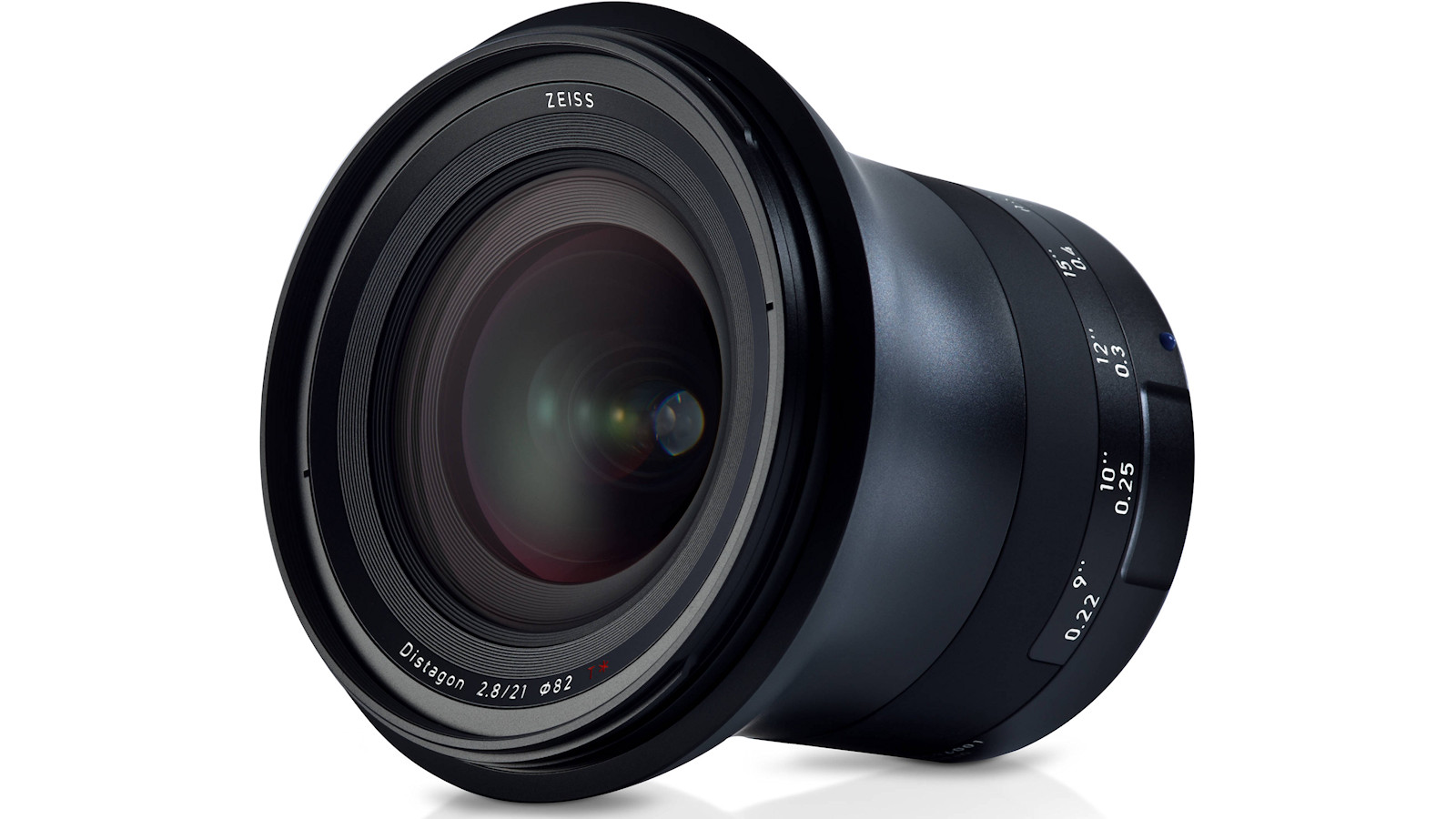
The Zeiss Milvus 21mm F2.8 is designed for Canon and Nikon full-frame DSLRs, available in ZE and ZF.2 options respectively. There are wider-angle lenses in the Milvus family, in the same fitment options, namely the Zeiss Milvus 15mm F2.8 and Zeiss Milvus 18mm F2.8. However, if you find that the viewing angles of these two lenses is simply too expansive, the 21mm gives a useful boost compared with a typical 24-70mm zoom lens, without going to such extremes. It’s useful for everything from landscapes and cityscapes to architectural interiors and astrophotography. The viewing angle also works well simply for creative effect.
Specifications
Key features
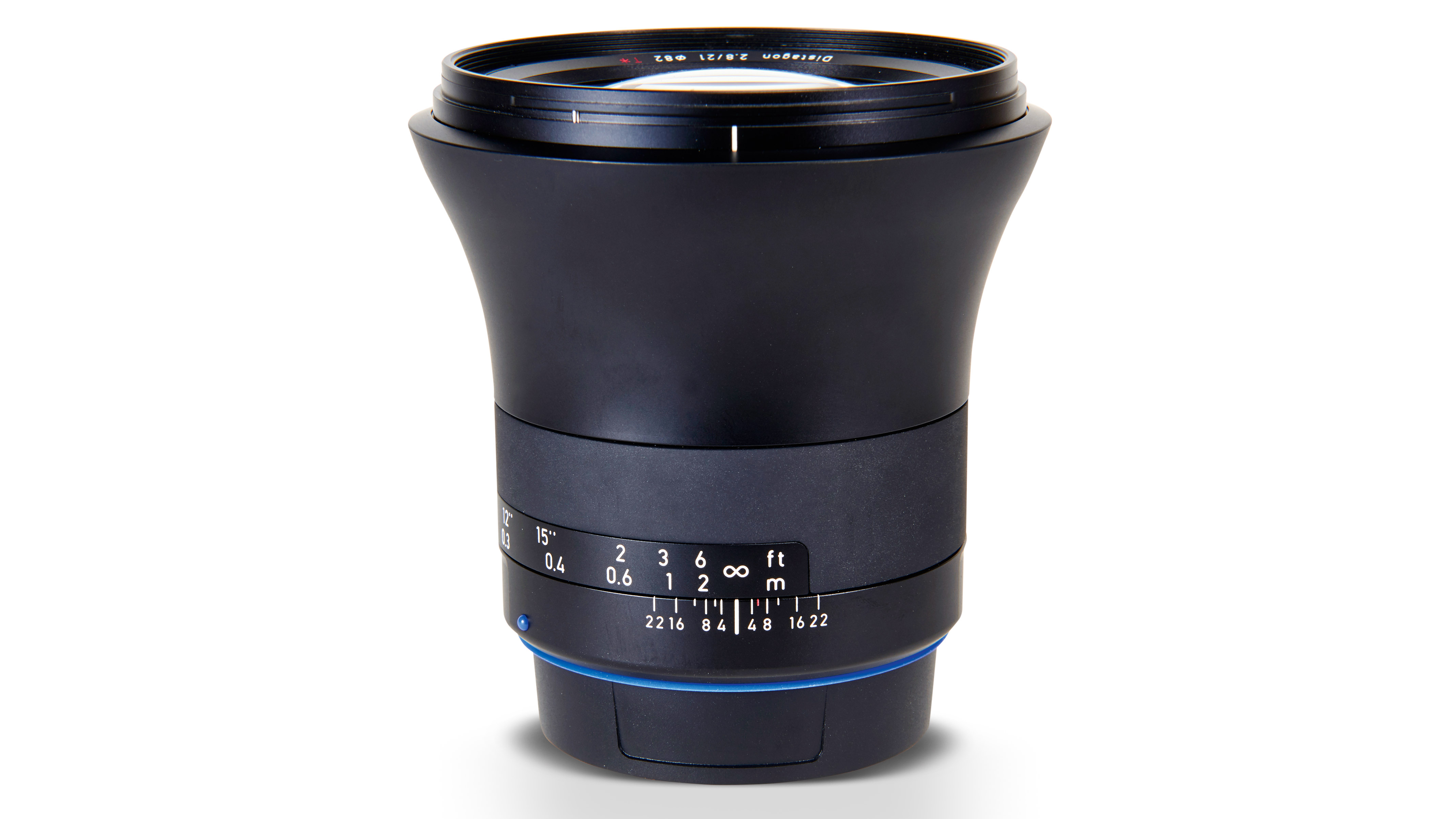
I’ll kick off with a feature that’s absent in this lens, and that’s autofocus. If you don’t like being in control, stop reading now, but I actually find that manual focusing works really well with ultra-wide-angle lenses. Although it’s manual-focus, the Zeiss shares with other Milvus lenses a full complement of electronics for communication with the host camera body. As such, the focus confirmation lamp works in Canon DSLRs, while Nikon cameras add directional assist lamps. Coupled with the generous depth of field at regular shooting distances and medium apertures, that makes manual focusing a breeze.
Although designed for DSLRs, before mirrorless full-frame cameras were even a glint in the eye of Canon and Nikon, the lens works just as well (arguably better) with EOS R-system and Nikon Z-system cameras. You get the additional focusing benefits of a magnified preview in the viewfinder and the focus peaking option.
Despite its ultra-wide perspective, the lens has reasonably compact dimensions of 96x95mm and no heavyweight, tipping the scales at 851g for the Canon version and just 735g for Nikon. The petal shaped hood is detachable, so the lens features a filter attachment thread, particularly useful for landscape photography, which has an 82mm diameter.
Build quality looks and feels fabulous. The barrel is made from black anodized metal and features a grippy rubberized focus control ring. This has a long 124-degree throw, making precise adjustments much easier than with an autofocus lens in manual focus mode. Another bonus of the long throw is that there are plentiful markings on the focus distance scale, complete with depth of field markers for all full f/stops between f/4 and f/22. The aperture control ring has click/de-click options in the Nikon version of the lens, but there’s no de-click facility in the Canon edition. Like with other Milvus lenses, extensive weather-seals are fitted.
Performance
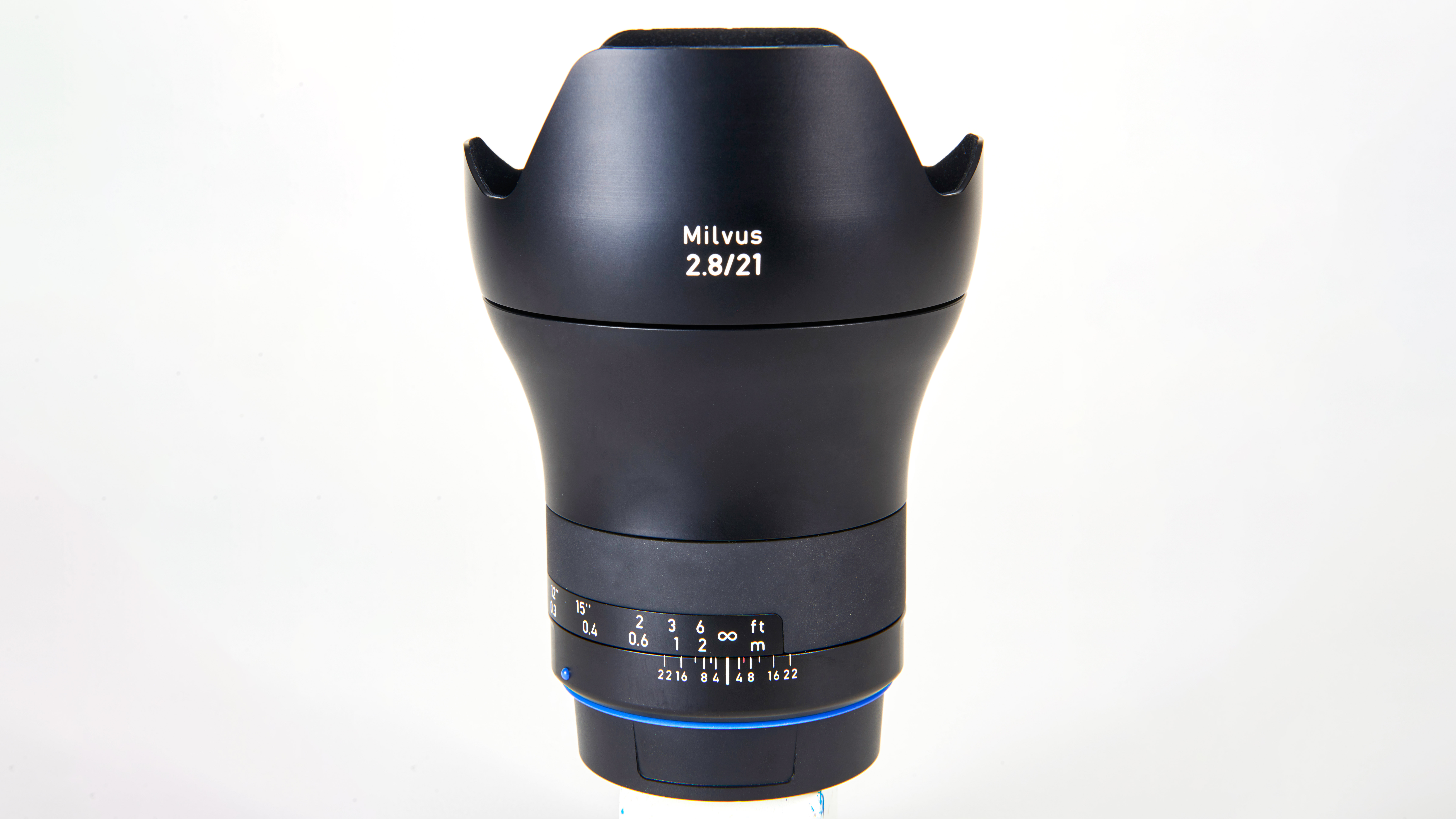
The lens is designed on classic Zeiss Distagon principles. The designers didn’t feel the need to include any aspherical elements but five anomalous partial dispersion elements are featured in the 16-element path, to enhance color quality and clarity, while reducing chromatic aberrations. Trusty Zeiss T* anti-reflective coating is applied to both sides of each element, to reduce ghosting and flare, and to enhance contrast.
The lens comes out of the traps at f/2.8 with very good sharpness across almost the entire image frame, although it pays to stop down to between f/5.6 and f/16 if you need to maximize extreme edge/corner sharpness. Color fringing proved minimal in my tests and, refreshingly for an ultra-wide-angle lenses in this day and age, the Milvus 21mm is a zero-distortion optic.
Lab results
We run a range of lab tests under controlled conditions, using the Imatest Master testing suite. Photos of test charts are taken across the range of apertures and zooms (where available), then analyzed for sharpness, distortion and chromatic aberrations.
We use Imatest SFR (spatial frequency response) charts and analysis software to plot lens resolution at the center of the image frame, corners and mid-point distances, across the range of aperture settings and, with zoom lenses, at four different focal lengths. The tests also measure distortion and color fringing (chromatic aberration).
Sharpness:
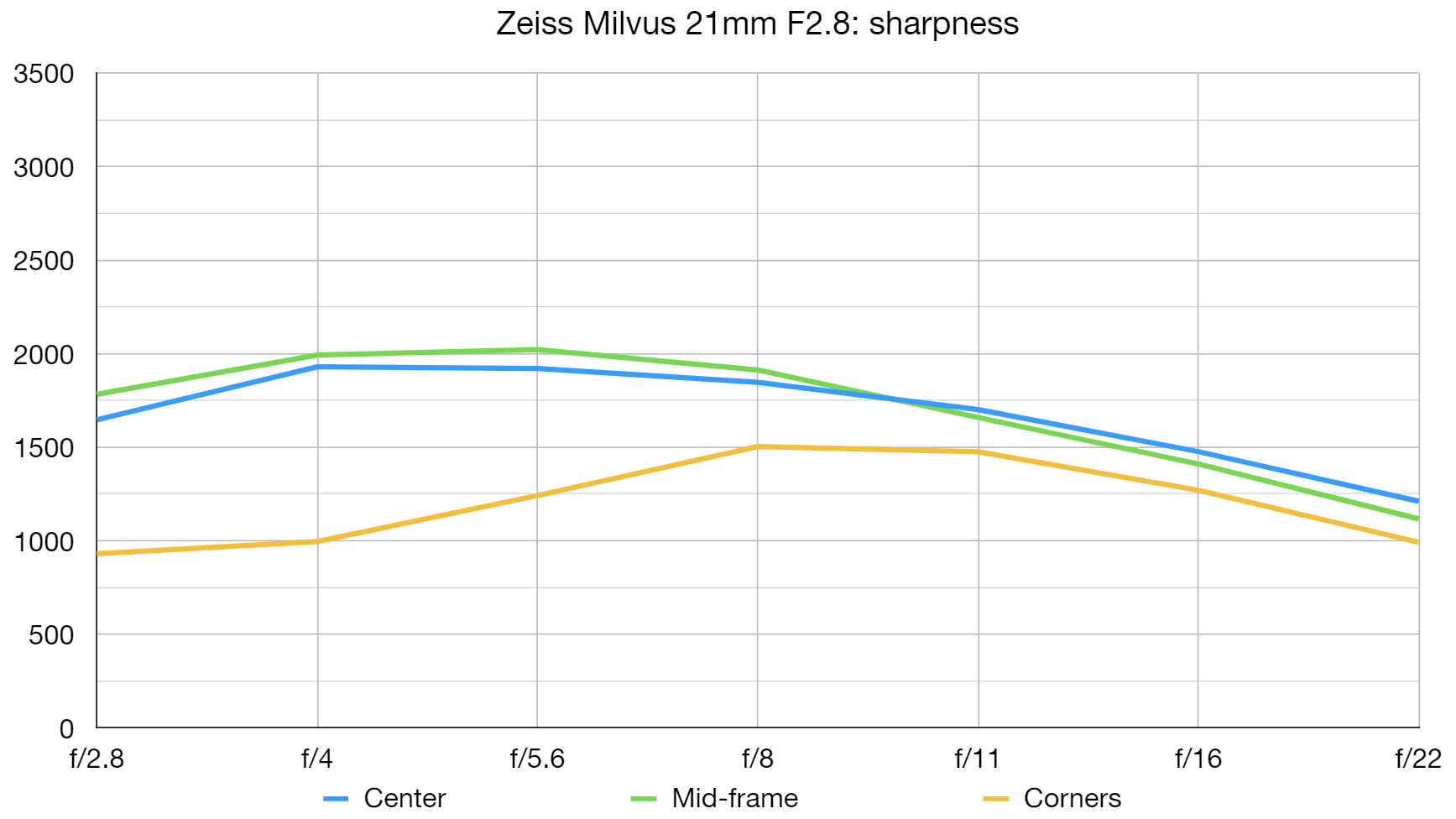
Center-sharpness is very good wide-open at f/2.8, and excellent at apertures of between f/4 and f/11. Outside the central area, sharpness is excellent from f/2.8 to f/11, while extreme edge/corner-sharpness is best at apertures of between f/5.6 and f/11.
Fringing:
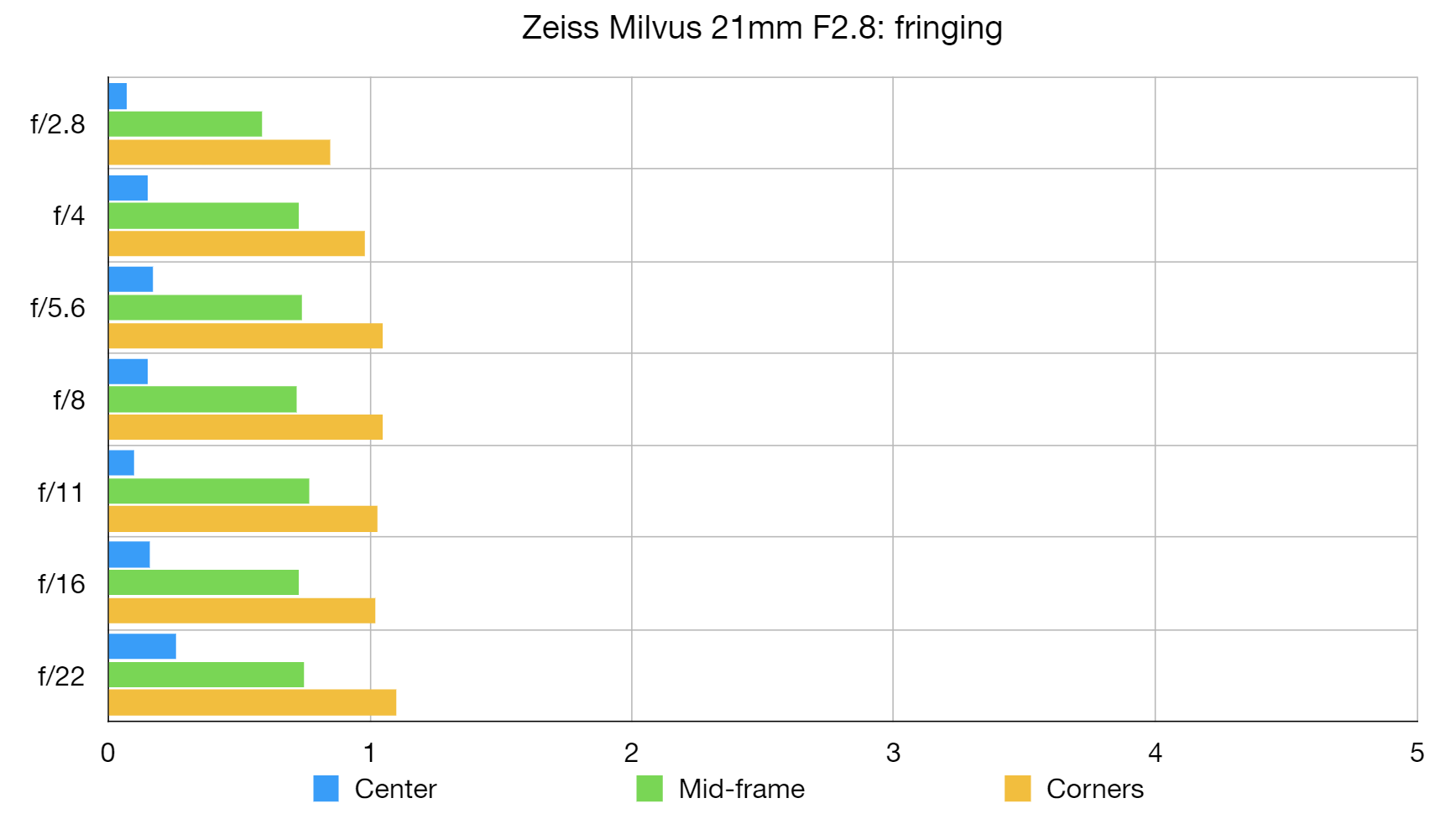
There’s very little color fringing even at the extreme edges and corners of the image frame, which will generally go unnoticed in real-world shooting conditions.
Distortion: 0.00
The Zeiss Milvus 21mm is essentially a zero-distortion lens. That’s no mean feat for such an ultra-wide-angle optic.
Verdict
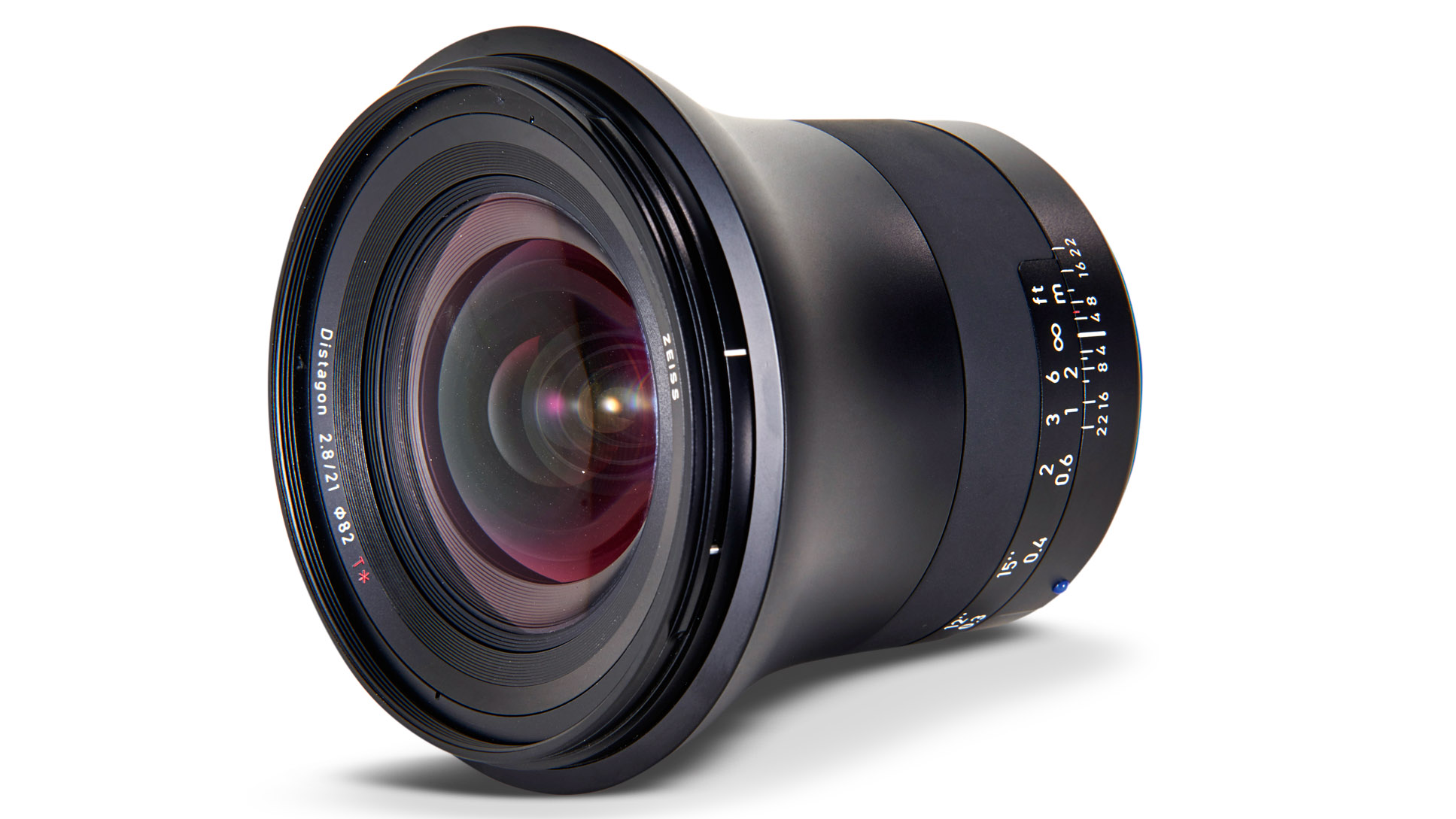
A measly 3mm might not sound much but I love the way the Zeiss Milvus 21mm F2.8 gives me a very noticeable step up in viewing angle, compared with a 24-70mm ‘trinity’ zoom lens, with the same f/2.8 aperture. It’s a manual-focus lens but don’t let that put you off. It’s a top-class optic, but the purchase price might be hard to swallow.
Read more:
Best camera lenses to get
Best Canon lenses
Best Nikon lenses
Best Sony lenses







